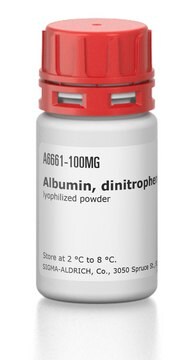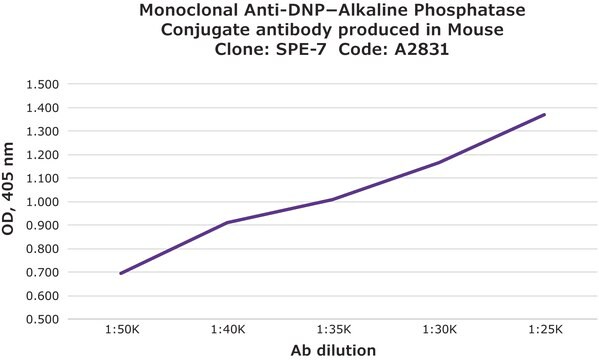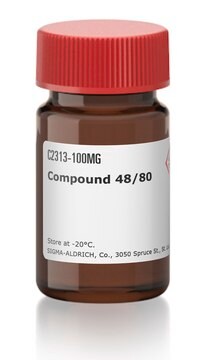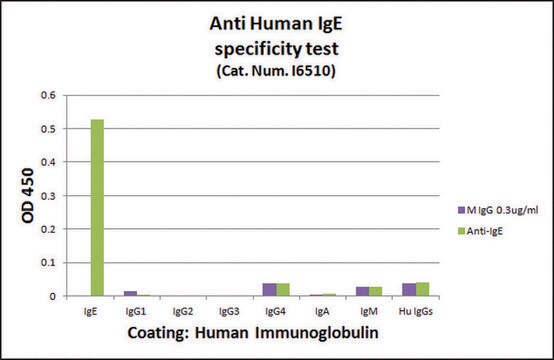D8406
Anti -Dinitrophenyl antibody, Mouse monoclonal
IgE isotype, ~1 mg/mL, clone SPE-7, affinity purified immunoglobulin, buffered aqueous solution
Synonym(s):
Anti-Dinitrophenyl, Anti Dnp Ige, Anti-DNP IGE - Monoclonal Anti-Dinitrophenyl antibody produced in mouse, Anti-Dnp Ige, Monoclonal Anti-DNP
About This Item
Recommended Products
biological source
mouse
Quality Level
conjugate
unconjugated
antibody form
affinity purified immunoglobulin
antibody product type
primary antibodies
clone
SPE-7, monoclonal
form
buffered aqueous solution
concentration
~1 mg/mL
technique(s)
indirect ELISA: 0.05-0.1 μg/mL using using 0.5 μg/well DNP-BSA as the coating antigen and 1 μg/mL Monoclonal Anti-Mouse IgE, Peroxidase conjugate as the detector antibody.
isotype
IgE
shipped in
dry ice
storage temp.
−20°C
target post-translational modification
unmodified
Looking for similar products? Visit Product Comparison Guide
General description
IgE gene is encoded on human chromosome 14. IgE is the least circulating antibody, but critical for eliciting hypersensitivity reaction against allergens.
Immunogen
Application
Western Blotting (1 paper)
Monoclonal antidinitrophenyl specific mouse IgE has been used in degranulation of rat mast cells using microplate reader and fluorescence spectrophotometer.
Biochem/physiol Actions
Physical form
Storage and Stability
Disclaimer
Not finding the right product?
Try our Product Selector Tool.
Storage Class Code
12 - Non Combustible Liquids
WGK
nwg
Flash Point(F)
Not applicable
Flash Point(C)
Not applicable
Regulatory Listings
Regulatory Listings are mainly provided for chemical products. Only limited information can be provided here for non-chemical products. No entry means none of the components are listed. It is the user’s obligation to ensure the safe and legal use of the product.
JAN Code
D8406-.2MG:
D8406-BULK:
D8406-VAR:
D8406-.5MG:
D8406-100UG:
IXO67685:
Certificates of Analysis (COA)
Search for Certificates of Analysis (COA) by entering the products Lot/Batch Number. Lot and Batch Numbers can be found on a product’s label following the words ‘Lot’ or ‘Batch’.
Already Own This Product?
Find documentation for the products that you have recently purchased in the Document Library.
Customers Also Viewed
Our team of scientists has experience in all areas of research including Life Science, Material Science, Chemical Synthesis, Chromatography, Analytical and many others.
Contact Technical Service













